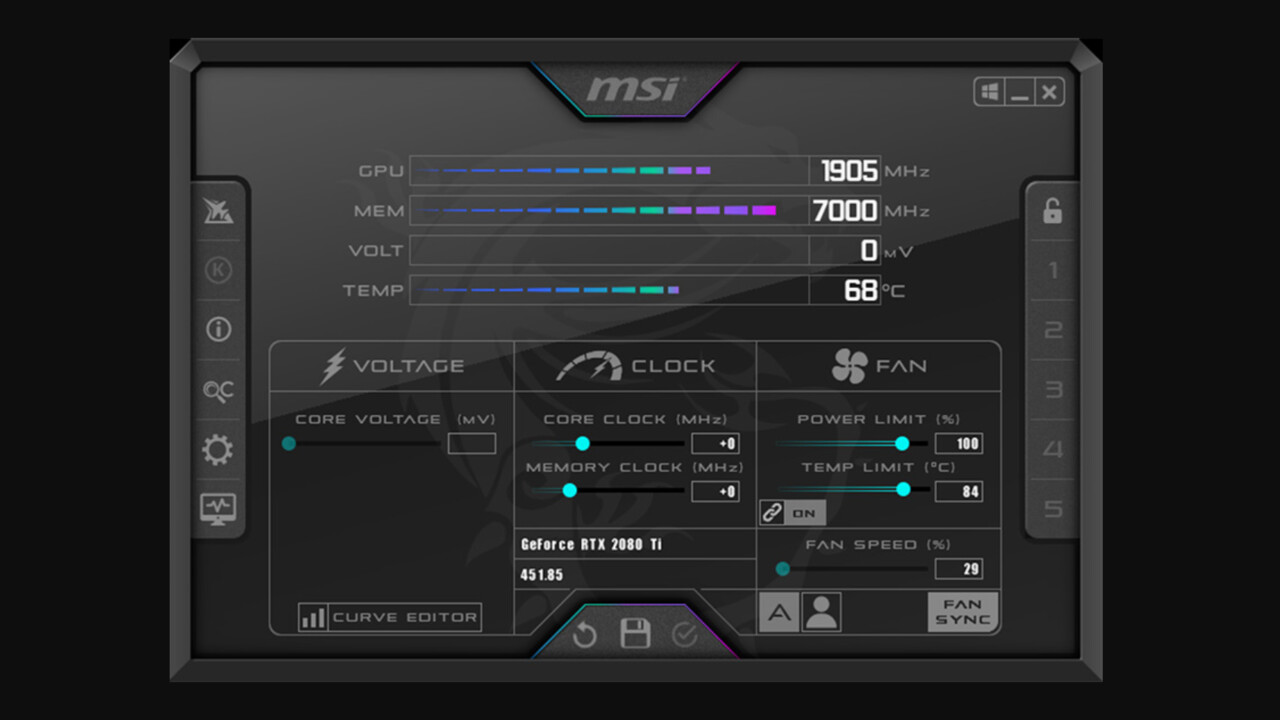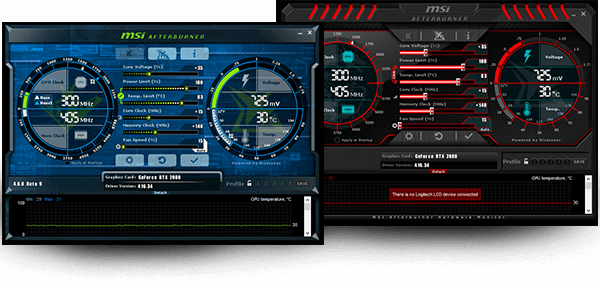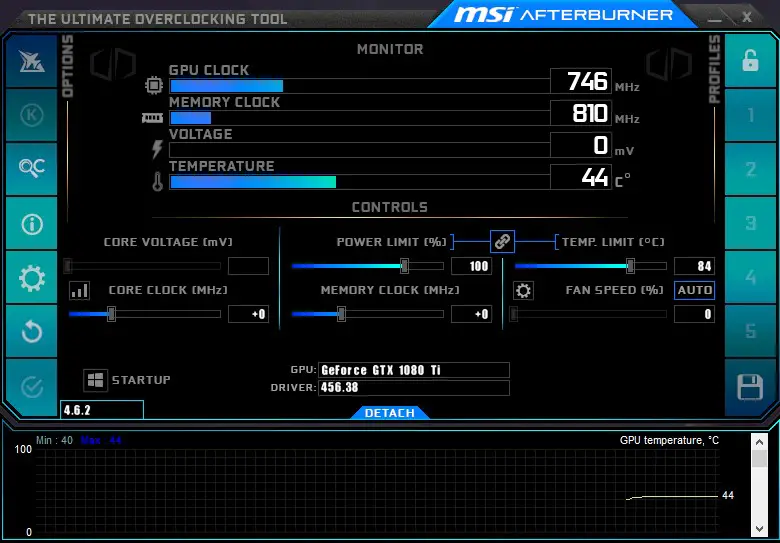

Instability usually means that you'll have to give it a little more voltage.
What is msi afterburner free#
You're also free to overclock and underclock the GPU to your liking: don't overlook stress-testing it afterwards, however. Stress-test it to check for any instability, and see if you can undervolt some more. Starting out with a slight -10mV undervolt is best, but you can give your card -50 from the jump if you're up to it. It's very much recommended to undervolt your card if you have the time: look up your model, find what other users have come up with, and see how your chip stacks up. If you want to be thorough, you can tweak your voltage according to your card's frequencies via the aforementioned utility. Some cards can be undervolted straight from the general interface, while for others, you'll have to use the Curve Editor tool. There's a reason that undervolting is so popular these days, after all. Undervolting, overvolting, and other things you can do with the softwareĪs a rough guide, with today's graphics cards, you'd be hard-pressed to feel the need to give them more voltage, especially as manufacturers tend to overvolt them from the factory.

These presets work to limit the amount of voltage to apply to your card: I never once needed to change it from Standard, but your mileage may vary. Standard, Extended, Reference, and Third Party. Should you be interested in tampering with your card's voltage, Afterburner provides some presets for you to work with.

In any case, keeping it locked by default is a smart decision from MSI. Though giving your card too little voltage will, at worst, shut down your computer, giving it too many millivolts runs the risk of burning it. This is to prevent access to the Core Voltage section by a less knowledgeable user. Basic options, such as enabling hardware control and monitoring, as well as the low-level IO driver, are already enabled, but given this is an overclocking program, you might be surprised to find the voltage control option being locked by default. The Properties menu is where Afterburner flexes its proverbial muscles when it comes to affording overclockers the options they need. Information about your GPU's usage, clocks, voltage, temperature, and fans is displayed front-and-center, so bringing up the program to the forefront may be a good way to check that data at once. Luckily, you can change it under the User Interface tab in the Settings menu. Interface-wise, Afterburner has recently gotten a redesign to make it appear more in line with what users would often call a "modern design." Some are fans of it, some aren't - I'm among the latter - but this redesign doesn't significantly change anything at all about the program: just its looks. With that being said, you can entirely omit installing RTSS if you're not interested in its capabilities, as Afterburner will work just fine without it. Even if you're not familiar with monitoring hardware performance, Afterburner integrates RTSS so well that you won't even have to concern yourself with accessing the latter's interface. An overview of your cardīefore going over operating the software, it's worth noting that it includes the Riva Tuner Statistics Server (RTSS) component, which it collaborates with to provide an exhaustive hardware monitoring solution.

What is msi afterburner software#
The program comes as a solution for those seeking more precise overclocking controls for their graphics card, offering users who are not happy with their default GPU software interface an alternative way of controlling their performance. Whether you're after increasing your graphics card's performance, upping its efficiency, or simply looking to have more control over it, MSI's offering is well-established in an industry where overclocking tools are certainly in no short supply. When talking about GPU software, it's rare not to see MSI Afterburner being mentioned.


 0 kommentar(er)
0 kommentar(er)
